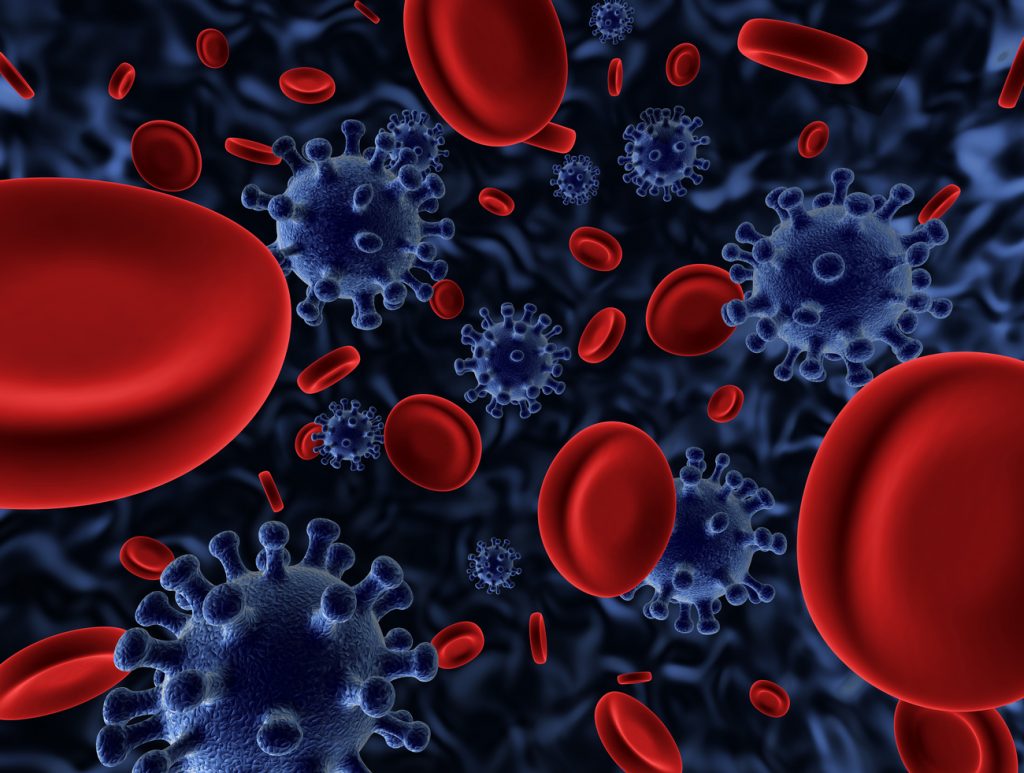Posts tagged living with HIV

The Sneaky Nature of the HIV Virus
There is no doubt that HIV is a deadly virus. Since it was discovered, this pandemic has infected 78 million people and 35 million have died due to an AIDS-related illness. The worst part is that scientists have yet to find an absolute cure to the disease. Why is it that the HIV virus is so hard to eradicate? What is it about the disease that makes treatment difficult?
Many experts note the infection’s ability to hide within the body. HIV is notorious for eluding even the most powerful combinations of medicine. The sneaky nature of the disease allows it to wait until the right moment, when the body’s defenses are down, to attack the immune system. Even today, scientists are still trying to figure out and understand exactly how the virus works in order to combat its effects on the body.
How the HIV Virus Moves Within the Body
Once the body is infected with HIV, the virus begins to attack the immune system. It’s number one target are the CD4 cells in the body. These cells help the immune system fight off infection and diseases. Little by little, HIV lowers the CD4 count until the body can no longer protect itself.
The best defense against HIV is antiretroviral therapy (ART). This is a combination of several medications that work together to suppress HIV levels in the body. In order for this treatment to work, it has to be taken daily. When taken properly, the treatment has proven effective in reducing traces of the virus to nearly undetectable levels and preventing the progression of the disease to aids.
What Studies Have Found
ART is no cure. Traces of the virus remain within the body despite the use of these strong medications. The virus likes to hide in immune cells when at low levels. By remaining dormant in these “Sanctuary Sites,” it can wait in places unreachable by drugs. Once it has found the right moment, it will quickly reproduce when an HIV positive individual stops taking ART therapy.
In a recent joint study by the Monash Biomedicine Discovery Institute and the Systems Immunity Research Institute at Cardiff University, the two institutions discovered that mutations within HIV help it appear dormant and virtually undetectable by the immune system. These mutations change the way that key immune molecules called Major Histocompatibility Complex (MHC), display the virus.
“This work uncovers a novel mechanism for HIV immune escape, which will be important to incorporate into future vaccine development and may have broader implications for immune recognition of MHC molecules,” he said.
What You Can Do
While scientists work hard to find a way to detect and eradicate the HIV virus completely, you have to do your part to curb the spread of the virus. Protect by getting tested. Knowing is an important step. If you are HIV-negative, protect yourself by practicing safe sex and taking pre-exposure prophylaxis (PrEP). For those infected by the disease, remember to take ART daily to prevent the virus from progressing.

Hypertension an Increasing Problem for Africans Living With HIV
HIV is a worldwide epidemic. From country to country, the virus has a significant impact. This makes it harder to provide the resources to fight against the virus. In sub-Saharan Africa, there were 24.7 million people living with HIV in 2013. Even worse, the number of new HIV infections are up to 1.5 million. Only 39% of adults receive antiretroviral treatment.
At-Risk Individuals
There are several key groups affected by HIV within this region of the world. Unfortunately, research has shown that many of the countries in Africa, mainly Southern Africa, are the worst affected by the disease. The government continues to encourage and offer more testing for the population but many individuals are unaware of their status, leaving the country at continued risk.
The groups who are the most at risk included young women, children, sex workers, men who have sex with men, and drug users. There are several factors putting these groups in danger. Condom distribution varies from country to country. It is also not uncommon to find younger women in relationships with older men. More than 4 in 10 new infections are young women around the 15-24, who are participating in unsafe sexual behavior.
Hypertension and Living With HIV
A new problem has risen in the region of sub-Saharan Africa. Scientists are discovering a high prevalence of hypertension among rural Africans. New research reveals that about 12 percent of people living with HIV in Tanzania have hypertension when they are diagnosed. Furthermore, an additional 10 percent of the population will develop Hypertension during the first months of antiretroviral therapy.
Tanzania has approximately 1.4 million people living with the virus. However, the country has done well to curb the spread of disease. New infection dropped by more than 20% between the years of 2010 and 2015. This is due in part to the increase of antiretroviral drugs in the area.
The researchers note that the development of hypertension in these patients is likely in relations to normal cardiological risk factors like age, body mass index, and renal function. The effect that antiretroviral drugs have on the body may play a role, though.
How Scientists Plan to Address the Issue
The prevalence of HIV and hypertension is 1.5 times higher than both Europe and the United States. This is trouble for a region that is already dealing with this epidemic. Dr. Emilio Letang, Swiss TPH and Barcelona Institute for Global Health (ISGlobal) has a few suggestions to combat the combination of both conditions.
“We have seen that such routine screening is a feasible and effective strategy to diagnose hypertension within an HIV programme. Moving forward, however, we need to make sure that leveraging such synergies does not compromise the efficiency of existing HIV programmes,” says Dr. Emilio.
Prof. Dr. Christoph Hatz, Chief Medical Officer at Swiss TPH continues by stating that “In many countries across sub-Saharan Africa, there is still a lack of access to drugs against major non-communicable diseases. In order for such integrated care programmes to work successfully, ensuring better availability and affordability of drugs as well as implementing comprehensive preventive and curative measures will be key.”

Diabetes Risk: HIV Patients Have a Higher Risk
Patients with HIV are always at risk. They are left vulnerable to infections and other comorbidities due to the virus attacking their immune system. Scientists were startled when they made the revelation that HIV patients had a 4 percent higher risk of developing diabetes. This discovery was made in a recent study published in the BMJ Open Diabetes Research & Care online journal.
Despite Low Obesity Rates, Diabetes Risk Persist
Obesity is a key indicator of diabetes. However, many patients with HIV do not have obesity, a fact leaving scientist confused. To find out just how prevalent diabetes is among the HIV population, researchers launched a probe into two sets of data from 2009-2010.
They analyzed a survey of 8,610 HIV-positive individuals in the Medical Monitoring Project (MMP) and another survey of 5,064 people without the disease who participated in the annual National Health and Nutrition Examination Survey (NHANES). Comparing these two sets of data would give them insights into the diabetes risk of those with and without HIV.
Here is the breakdown of what the researchers found:
- One in 10 HIV patients had diabetes.
- 4% of those with diabetes had type 1.
- Over of those with diabetes had type 2.
- 44% of HIV patients had and unspecified strain.
- Over 8% of the general population had diabetes.
- The occurrence of diabetes was 3.8% higher in HIV patients.
This study was able to show that HIV patients are at risk. However, since the research was purely observational, scientists were not able to make a definitive conclusion as to why. They know that obesity is still a risk factor, but due to its high absence in individuals with HIV, they have to think differently.
The researchers had this to say: “Additional research would help to determine whether [diabetes] screening guidelines should be modified to include HIV infection as a risk factor for [the condition], and to identify optimal management strategies in this population.”
HIV Infected Individuals and Age Related Diseases
HIV Infected Individuals and Age Related Diseases: Appear at Similar Age as in Uninfected Adults
Heart attacks, cancer, and kidney failure among HIV-infected individuals has been thoroughly researched and the data shows that infected individuals are more likely to develop one of these diseases than people who are not HIV positive. This research began to be compiled in the mid-1990s, when those infected with HIV were starting to live longer thanks to new antiretroviral medications. Before these drugs were created, contracting HIV was almost certainly a death sentence. When HIV/AIDs first came onto the scene, the HIV cells would eradicate the immune system, the person would develop AIDS, and common diseases like the cold or influenza would ravage the body and kill the host. In the years since, however, antiretroviral drugs have been developed and continually improved upon, and HIV has become a manageable disease. In fact, many HIV-positive individuals have been able to live out their lives with the infection and, in the U.S. and other developed countries, are now dying of non-HIV related circumstances. With the numbers of older HIV-positive individuals growing, the amount of research on those in this group has increased. The latest studies now suggest that among HIV infected individuals, age-related diseases appear at similar ages, as compared with uninfected individuals.
Researchers at the Johns Hopkins Bloomberg School of Public Health used data from almost 100,000 individuals, both infected and uninfected, who suffered from age-related diseases between 2003 and 2010. The results confirmed that those who are HIV-infected tend to develop heart attacks, cancer, and kidney failure much more commonly than in uninfected adults. However, it also showed that the ages of those developing heart attacks and cancer were the same in both infected and uninfected patients. Moreover, kidney failure seemed to only have a six-month gap between infected patients and patients who were not HIV positive. This news, that among HIV infected individuals age-related diseases appear at similar ages regardless of HIV status, shows that the timeline of getting checked for these diseases does not have to be significantly altered. However, the importance of checkups is still much greater for HIV-infected adults.
Cardiovascular Disease and HIV
Cardiovascular Disease and HIV: A Leading Cause of Mortality
Careful monitoring of those with HIV can help slow down the progression of the disease and other conditions that may come along too. Links between HIV and other chronic conditions are well-known and documented. Recent trends in regards to cardiovascular disease and HIV, however, have physicians on the lookout for new treatments and approaches, as the number of patients suffering from high cholesterol and hypertension is on the rise. This calls for action and new strategies for helping patients not only maintain heart health, but their overall well-being.
While a connection is not surprising between HIV and cardiovascular disease, researchers have noticed a trend that gives cause for concern. Many HIV-positive patients who present with either high cholesterol or hypertension are receiving treatment. The problem lies in the fact that, of those who are on medications, few are actually showing improvement. Clearly, a more effective approach is needed.
The prospects of gaining control over HIV have vastly improved in recent years. Today, HIV can be controlled, and a patient can lead a relatively healthy life. So, while the main cause of death for someone with HIV is not the virus, the other common causes of HIV related deaths now need to be addressed. Of these, stroke and heart attacks are on the rise. The treatments that are available and in use are generally able to control the conditions. The issue is one of helping patients understand the risks, guidelines, and course of treatment. Educating patients and helping them to stick with the outlined course will help change current trends.
Cardiovascular disease and HIV is a reality. While cardiologists and other specialists can help stem the tide, new treatment options are also needed. In order to have more effective results, medications that are specific to the needs and circumstances of those with HIV will have to be developed.



